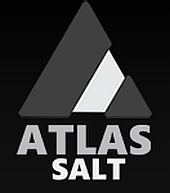 Peloton to complete Golden Trail drill program in 2017
Peloton to complete Golden Trail drill program in 2017
PELOTON EXPLORATION UPDATE AND PLANS FOR 2017
Peloton Minerals Corp. has provided an update on recent exploration activity and on the company’s exploration plans for 2017. Peloton owns a 100% interest in four gold exploration projects located in the States of Nevada and Montana, USA and in the Province of Ontario, Canada.
Golden Trail Project, Elko County, Nevada
On the Golden Trail Project, Peloton began a core drilling program in late 2016 and plans to complete the program in 2017. The program is designed to establish structural and zonation controls on mineralization along generally northwest-striking trends of mineralization and alteration. The largest of these zones, the Golden Trail Vein (GTV), cuts calcsilicate hornfels, marble, and hydrothermally altered limestone central to, and contiguous with, a strong northwest striking gravity high. The GTV extends over 1,200 meters in length with an associated alteration zone averaging 30 meters wide. Gold values above 20 ppb are common with several samples assaying above 9 g/t Au and one above 28 g/t Au. A continuous 1.5 meter channel sample assayed over 13 g/t Au. In weathered and oxidized outcrop samples, elevated Ag, As, Sb and Tl values accompany Au in iron-rich zones.
Early results from the drill core showed anomalous and coincident values in gold, silver, arsenic, antimony, and thallium in most of the 121 core samples. As a group, these five elements are considered indicators of Carlin-type mineralization.
All rock types are strongly hydrothermally altered breccia, limestone, and calcareous siliciclastic sedimentary rocks. Surface outcrops are limited and more drilling is required to confirm structural and zonation controls on mineralization in three dimensions.
In order to guide exploration drilling, Peloton geologists are currently integrating the recent multi-element geochemistry and assays from drilling with hyperspectral mineralogy of the drill core and earlier hyperspectral analyses of outcrop samples, both by Terracore, Inc., and recent airborne hyperspectral mineralogical data by SpecTIR LLC. These combined technologies have been shown to improve exploration success in lithologically similar and structurally complex settings such as the Long Canyon gold deposit in the Pequop Mountains to the south of Golden Trail.
Mineralization at the Golden Trail Project is similar in geologic setting, host rock lithology, alteration and gangue mineralogy, and geochemistry to sedimentary rock-hosted gold deposits and especially gold mineralization typical of eastern Nevada, including the Carlin-type Long Canyon gold deposit in the Pequop Mountains.
Independence Valley Project, Elko County, Nevada
On the Independence Valley Project, some additional geologic mapping was completed in late 2016 and an NI 43-101 report was initiated. The Company plans to complete Induced Polarization (“IP”) geophysics at Independence Valley during the spring-summer of 2017 and incorporate that data into a final NI 43-101 report.
The Independence Valley Project is centered on the largest untested rhyolite dome in the Spruce Mountain Mining District which is located in the southwestern Pequop Mountains. The Spruce Mountain Mining District contains many historic base and precious metals mines and has been mined since the 1840’s. Rhyolite and granitic intrusive rocks are found in almost all of these mines and intrude the mineralized structures at the same time as the mineralization or just afterward.
The rhyolites could be considered the smoking gun for mineralization within the Spruce Mountain mining district and the focus of planned IP geophysics will be to identify drill targets within and around the rhyolite dome.
River Stage Project, Rainy River Belt, Ontario
On the River Stage Project, the Company commissioned a review of available assessment file records and Ontario Geologic Survey data. A first stage exploration proposal has been requested which the company expects to include some combination of surface prospecting, geologic mapping, soil geochemistry and geophysics. The Company plans to complete some or all of the recommended program during 2017.
The River Stage Project is a 2,480 acre mineral claim package located in the Dash Lake and Brooks Lake areas in the central part of the Rainy River Gold Camp, Ontario, approximately 90 kilometers southeast of the Town of Kenora, Ontario. This camp is becoming quite active with First Mining Finance Corp. recently purchasing claims tied immediately onto the Peloton claims, and hosting the Cameron Lake Gold Deposit, for a reported deemed value of $13 million in an all-stock transaction, and New Gold Inc. constructing a new mine 30 miles south west of the River Stage Project with a reported capacity of 2,100 tonnes per day. Several other companies are also active in the camp and a claim map is being prepared for the Company website.
Silver Bell St. Lawrence Project, Virginia City Mining District, Montana
On the Silver Bell St. Lawrence Project the Company plans to explore joint venture opportunities which would enable the company to focus available resources on Nevada and Rainy River while still advancing this project.
The Silver Bell St. Lawrence Project hosts two past producing gold mines (the Silver Bell and the St. Lawrence) that operated in the early 1900’s and again in the 1970’s at the St. Lawrence. The historic shafts for each were located approximately 3,600 feet apart and the two mines were originally held by different owners. The Company has conducted surface mapping and geophysical programs between the two mine shafts and along strike, and is in possession of historical underground sampling records. An NI 43-101 technical report recommending further work is available at www.pelotonminerals.com .
Richard C. Capps, PhD, is the qualified person responsible for approving the technical information contained within this release.
http://www.pelotonminerals.com/News.php
































